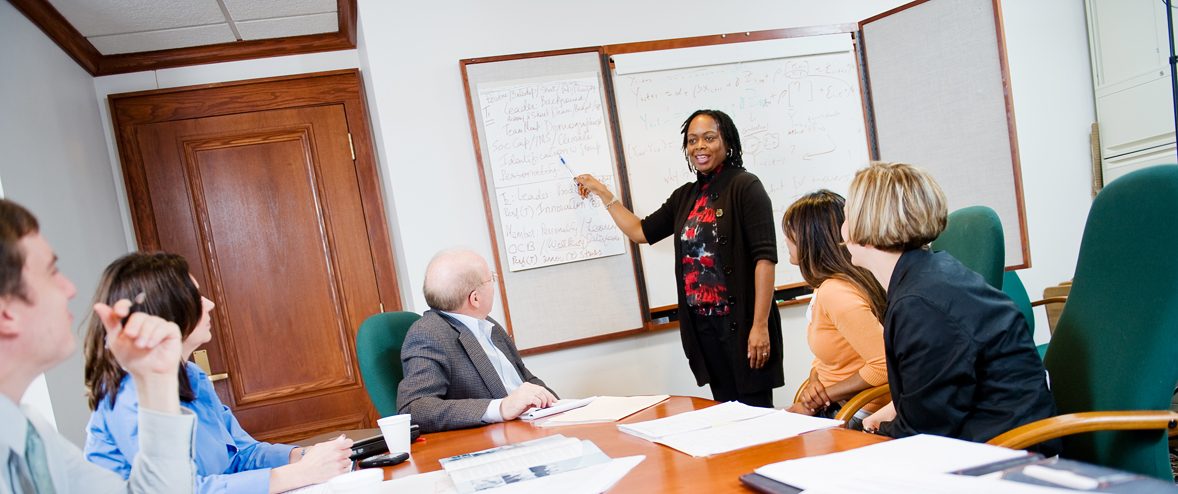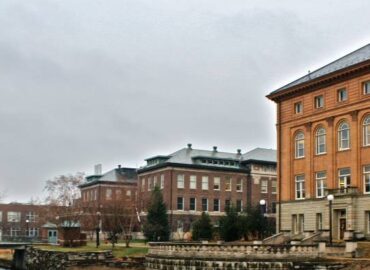A Net Zero Planning process will be more successful if it is supported by strong leadership and involves collaboration throughout campus. SEDAC is here to help you get the structures in place that will ensure the success of your Net Zero Plan. However, we also recognize that not every college may be able to put together the ideal Net Zero Team or get full administrative buy-in. Successful climate actions at the college level often start with a small cohort of climate action champions and grow from there.
Getting administrative buy-in
Who is your college's climate action champion? Often it's the facilities and maintenance director who works tirelessly to save energy in the college's buildings. If you're lucky, your college administrators are the champions. Some Illinois community college administrators infuse sustainability into their capital plans, curriculum, and operations. These colleges often have sustainability centers, managers, and committees. Unfortunately, this level of commitment to climate action is still relatively rare at community colleges. Many colleges do not have strong administrative buy-in or structural support for climate action initiatives.
During this time of economic and social upheaval, administrators may be forgiven for prioritizing other things. However, many climate actions, especially related to energy efficiency, can help address budget shortfalls and make the college more resilient in the long run. In a workshop hosted by SEDAC in 2017, Tim Gibson, John A Logan College's Director of Buildings and Grounds, described ways to get buy-in from the administration. His main advice was to find the need, and then show how green initiatives can meet that need. How can savings from energy efficiency measures help fund instructional equipment, staff, and scholarships? Find out what the administration cares about and talk about how climate actions can address those priorities.
Creating a team
Tim Gibson also described the importance of an energy efficiency team. At John A. Logan College, the team consists of:
- The Vice President of Business Services and Facilities
- The Director of Buildings and Grounds
- The Director of Purchasing and Auxiliary Services
- Director of Facilities Scheduling
- Office of Instruction
- JALC Sustainability Committee Director
- Campus Architect and Engineer
A sustainability team could also include the director of parking and transportation and a representative from public affairs. Representatives from students, faculty, and staff can be on the committee as well, providing valuable insight into how these groups of stakeholders may respond to and participate in climate actions.
Stakeholder feedback
Many colleges and communities build stakeholder feedback into the climate action planning process. It's important to understand the campus communities' perceptions on climate change, risk factors, and potential solutions. Where are the areas of broad consensus and the areas where more effort will be needed to build consensus?
Surveys, focus groups, and listening campaigns can assess community perceptions over time. These methods can identify climate change perceptions, opinions about existing and past actions, and opinions about potential strategies to adopt. Helping campus stakeholders feel involved in the planning process will be key to getting their buy-in when you want to start implementing climate actions.
How they did it
Moraine Valley Community College has proactive leadership and strong student/faculty involvement in sustainability initiatives. A review of their sustainability timeline reveals a few of the things they've done to make sustainability a priority and get buy-in from the campus community. Here's a sample:
- In 2007 they created a Green Team with representation from staff, faculty, and staff.
- In 2007 College President Dr. Vernon Crawley signed the first Illinois Sustainable University Compact.
- In 2008 Sustainability was adopted into the revised Strategic Plan.
- In 2009, Moraine Valley hired a sustainability coordinator/manager and began involvement with IGEN.
- In 2010 they created the Center for Sustainability and developed more green community outreach and workforce programs.
- In 2012 they increased student involvement through a new "Student Green Club."
- In 2013 they started a "Greening Your Curriculum" program to infuse sustainability into the curriculum. Ultimately, over 80 faculty members participated in the program.
- In 2014, they committed to carbon neutrality by 2040 and became a member of Community Green, USGBC Center for Green School.
- In 2015, students completed a third year of production for the Moraine Valley Community Garden.
- In 2016, they completed a Climate Action Plan in accordance with the Climate Commitment signed by Dr. Jenkins, pledging the college to be carbon neutral by 2042.






